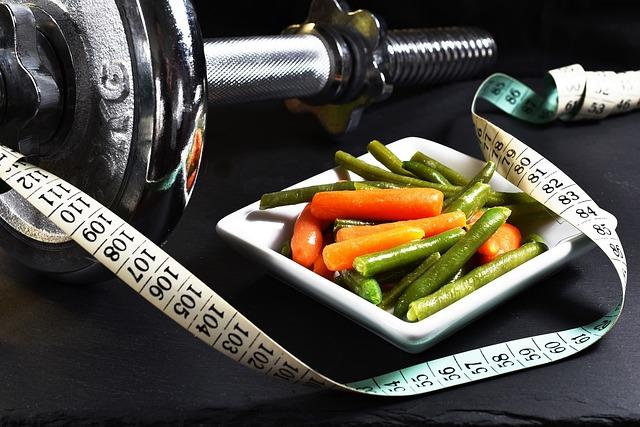In the ever-evolving landscape of fitness, the quest for an effective, convenient workout solution remains a top priority for many. Enter the full-body dumbbell workout, a versatile and efficient regimen that promises to transform your living room into a dynamic gym space. Whether you’re a seasoned athlete or just beginning your fitness journey, this workout harnesses the power of simplicity, requiring only a pair of dumbbells to target every major muscle group. Gone are the days of needing elaborate equipment or hefty gym memberships; with a little creativity and commitment, you can sculpt, tone, and strengthen your body from the comfort of your own home. Join us as we explore this empowering workout that fits seamlessly into any lifestyle, making fitness accessible and achievable for everyone.
Unleashing the Power of Dumbbells for a Complete Home Workout
Transform your living room into a personal gym with just a pair of dumbbells. This versatile equipment allows you to target every muscle group effectively. With no need for bulky machines, dumbbells provide resistance that helps improve strength, coordination, and balance. Embrace the simplicity and efficiency of dumbbells for an invigorating workout that fits seamlessly into your daily routine.
- Upper Body: Engage your arms, shoulders, and chest with exercises like bicep curls, shoulder presses, and chest flyes. Adjust the weight to match your fitness level and watch your strength soar.
- Core: Strengthen your abs and obliques by incorporating dumbbell Russian twists and overhead presses into your routine. These moves challenge your stability, enhancing core strength and endurance.
- Lower Body: Sculpt your legs and glutes with squats, lunges, and deadlifts. Dumbbells add intensity to these foundational movements, maximizing muscle engagement and growth.
Whether you’re a beginner or a seasoned athlete, dumbbells offer a flexible and effective way to achieve a full-body workout at home. Customize your sessions to focus on specific areas or enjoy a balanced regimen that hits every major muscle group. With a little creativity, your dumbbell workouts can continually evolve, keeping you motivated and challenged.
Crafting a Balanced Routine for Maximum Muscle Engagement
Achieving optimal muscle engagement in a home workout requires a thoughtfully structured routine that targets all major muscle groups. Balance is the key. Begin with exercises that recruit multiple muscle groups to enhance coordination and build functional strength. Incorporate moves like the dumbbell squat to press, which engages the legs, shoulders, and core, creating a full-body synergy.
- Push-Pull Combination: Alternate between push exercises like dumbbell bench presses and pull exercises like bent-over rows to ensure balanced development.
- Core Integration: Weave in movements such as Russian twists or renegade rows to engage the core throughout your routine.
- Progressive Overload: Gradually increase weight or reps to continually challenge your muscles, promoting growth and endurance.
By integrating these elements, you can create a dynamic workout that not only builds strength but also enhances your overall fitness level, all from the comfort of your home.

Mastering Form and Technique to Prevent Injury
Achieving the perfect balance between strength and safety is crucial when engaging in a full-body dumbbell workout at home. Prioritizing proper form and technique is the key to unlocking your fitness potential while minimizing the risk of injury. Begin by focusing on these essential elements:
- Posture: Always maintain a neutral spine, keeping your shoulders back and core engaged. This foundation supports every movement and prevents unnecessary strain.
- Control: Execute each exercise with slow, deliberate movements. Control ensures that muscles are engaged effectively and joints are protected.
- Breathing: Synchronize your breath with your movements. Inhale during the eccentric phase (lowering the weight) and exhale during the concentric phase (lifting the weight).
Incorporating these techniques into your routine not only enhances performance but also cultivates a mindful approach to fitness. As you progress, remain attentive to your body’s signals and make adjustments as needed to sustain a safe and effective workout environment.

Selecting the Right Dumbbell Weight for Your Fitness Level
Choosing the appropriate dumbbell weight is crucial for optimizing your home workout routine and preventing injuries. Start by assessing your current strength level and fitness goals. If you’re a beginner, it’s advisable to opt for lighter weights to ensure you can perform exercises with proper form. A set of 5-10 pounds might be ideal to begin with. As you gain confidence and strength, gradually increase the weight to challenge your muscles without compromising your technique.
- Beginners: Begin with 5-10 pounds to focus on form and endurance.
- Intermediate: Use 10-20 pounds for building strength and muscle definition.
- Advanced: Opt for 20+ pounds to enhance power and increase muscle mass.
Listen to your body and adjust the weight as needed. If you can perform more than 15 repetitions with ease, it might be time to increase the weight. Conversely, if you’re struggling to complete even a few reps, consider going lighter to prevent strain. Remember, the right weight will challenge you but still allow for a full range of motion.































